If you’re visiting London, we think that a visit to the Tower of London should definitely be high on your list of things to do in the city. This is home to one of the oldest intact buildings in London, and has seen a huge amount of history. We’ve visited multiple times, and always have a great day out here.
There’s a lot to see and do at the Tower of London, from seeing the Crown Jewels to learning the legend of the ravens. In this guide to visiting the Tower of London (officially known as Her Majesty’s Royal Palace and Fortress of the Tower of London), I’m going to tell you everything you need to know to plan your visit.
This will include everything from saving money on your Tower of London tickets, to what to see and do, and more tips for your visit. I’ll also share some tips for where to stay near the Tower of London. Let’s get started.
Table of Contents:
An Overview of the Tower of London
Before we get into the details, you might be wondering what the Tower of London is, and why it warrants a visit. Let me answer that question with some quick history.
In 1066 William the Conqueror invaded Britain, bringing an end to centuries of Anglo-Saxon rule. The monarchy that William started shaped much of the England you see today, right up to and including the current monarch.
Of course, invading and conquering a country is one thing. Keeping it under your rule once you’ve done that is another. With this in mind, William the Conqueror, now William the First, set about building castles to keep control of his new lands. In fact, from 1066 through to 1087, he built nearly 700 castles across England and Wales.
With London as his capital city, naturally an impressive castle had to be built here to demonstrate his absolute power. And so it was in 1066 that construction on the Tower of London commenced. Initially the building was a simple timber structure, but a more impressive stone structure was built in the early 1080s. This was built over pre-existing Roman fortifications that were part of Roman city wall.
This was the White Tower, an imposing stone fortress which still survives today as the centrepiece of the Tower of London.

Over the centuries various changes and additions were made to the Tower of London. These included extra fortifications and structures, including thick walls, defensive towers, and buildings for accommodation, holding prisoners and munition storage.
Today, the Tower of London consists of a series of defensive structures, walls and buildings which span an area of 12 acres. First there is the moat, then there is a defensive wall, the outer ward, another defensive wall, the inner ward and finally the innermost ward where you find the White Tower.
The Tower of London has been the location of many key events in British history. Multiple important figures throughout history were executed here, with 112 people executed at the Tower over 400 years. These included some of Henry VIII’s wives, political and religious prisoners, and even German spies during World War II.
Today the Tower of London is primarily a visitor attraction, a role it has played for around 400 years. It also serves some notable functions, including being the home of the Crown Jewels and the regimental headquarters of the Royal Regiment of Fusiliers. It’s a UNESCO world heritage site, and also a home for around 40 retired service personnel and their families.
As you can imagine with a building that spans so much history, we’ve only briefly covered the Tower of London in this overview, but hopefully this gives you enough to get an idea as to why to visit!
Where is the Tower of London?
The Tower of London is found on the north bank of the River Thames, right next to Tower Bridge. The address is London, EC3N 4AB. It sits right on the edge of the London borough of Tower Hamlets, next to the City of London.
The Tower of London entrance is on the west side of the building, with the ticket and security check lines forming outside the west gate. This area is also where you’ll find the ticket shop, welcome centre and shop.

How to get to the Tower of London
There are multiple options for getting to the Tower of London, including by rail, underground, bus and even boat! Here are the main options you have.
- Tube. The nearest tube station to the Tower of London is Tower Hill, which is served by the District and Circle lines. This is around a five minute walk from the Tower of London. Other nearby stations (within 15 minutes walk) include Aldgate, Aldgate East, Tower Gateway, Monument, Bank, London Bridge and Fenchurch Street.
- Public bus. Bus services 15, 42, 78, 100 and RV1 all stop near the Tower of London.
- Boat. The Thames River Boat service stops at Tower Pier, and offers connections up and down the river. A day pass for the Thames River Boat is included on the London Pass, which also includes Tower of London admission.
- Train. The nearest train station for the Tower of London is London Bridge Station, around 15 minutes walk away. Liverpool Street Station is around 20 minutes walk away.
- Taxi. You can of course get a taxi to the Tower of London, which prices varying depending on the distance travelled.
- Hop on Hop off Bus. All the London sightseeing buses make a stop at the Tower of London. A sightseeing bus tour ticket is also included on the London Pass.
- Walking. Depending on where you are traveling from, you might find it easiest to walk to the Tower of London. For example, it’s 20 minutes’ walk from St. Pauls Cathedral and the Shard, 45 minutes from Covent Garden or an hour from Westminster Abbey.
For more tips on travel in London, see our guide to getting around London.
Tower of London Opening Times
The Tower of London normally opens between 9am and 10am, and closes between 4.30pm and 5.30pm. These times vary depending on the time of year. They can also change for school holidays. Normal opening times are as follows:
Summer (1st March – 31st October)
- Sunday – Monday: 10am – 5.30pm
- Tuesday – Saturday: 9am – 5.30pm
Winter (1st November – 28th February)
- Sunday – Monday: 10am – 4.30pm
- Tuesday – Saturday: 9am – 4.30pm.
Last admission is usually between 1 hour and ninety minutes before closing, however we would recommend giving yourself at least 2 or three hours for a visit.
Note that opening times can vary, so you will always want to check current opening times here in advance of your visit.
Do You Need a Ticket for the Tower of London?
You definitely need a ticket for the Tower of London. You can either book your tickets online in advance of your visit (recommended), or you can buy tickets from the ticket office which is near the main entrance.
We highly recommend booking tickets in advance. At busier times, there can be queues for the ticket office, so you will lose valuable sightseeing time standing in line.
How Much does it Cost to Visit the Tower of London?
As of April 2024, ticket prices for the Tower of London are as follows:
- Adult – £34.80
- Child (age 5-15) – £17.40
- Concession (age 65+, 16-17, full time student, disabled visitors) – £27.70
- Child under 5 years – Free
Pricing can vary, we recommend you check the latest information here.
What Does the Tower of London Ticket Include?
The Tower of London ticket includes:
- Entry to the Crown Jewels, the White Tower and the Chapel of St Peter
- Entry to the Battlements, the Medieval Palace, the Bloody Tower, the Torture at the Tower Exhibition, the Fusiliers Museum, the Beauchamp Tower, and the Royal Mint Exhibition
- A tour of the Tower of London with a Yeoman Warder, or “Beefeater”. These run every hour starting near the main entrance, pre-booking is not required. The first tour is usually at 10am and the final tour is at 2.30pm.
The ticket does not include an audio guide, but an audio guide can be purchased separately for £5 for adults and £4 for children. You can either purchase these with your ticket or on-site. Audio guides can be collected just after you pass through the security check, to the right of the entrance.
Premium Tower of London Experiences
As well as the standard visit to the Tower of London, you can also book special experiences. These usually cost more, but will give you a unique experience. These might include witnessing special ceremonies, or simply getting in before the majority of the crowds. Some examples include:
- This early access tour of the Tower of London with a Beefeater which has you visiting prior to general admission
- This Tour of the Tower of London includes early access to the Tower and Crown Jewels. You’ll also get to see the opening ceremony, and have a fully guided experience inside the Tower of London. It also includes a hop-on hop-off city cruise tour, which departs right outside the Tower.
- One of the most unique experiences at the Tower of London is the Ceremony of the Keys. This is held every night from 9.30pm until 10.05pm, and tickets must be purchased separately. These are very popular, and ca be booked on the official website here. Note that photography is not permitted, and this ticket does not include admission to the Tower of London beyond the Key Ceremony itself.
- If you want to see the evening Ceremony of the Keys and also take a quick tour of the Tower, check out this tour. It includes an hour’s tour with a Yeoman Warder as well as the opportunity to watch the Ceremony of the Keys. I have done this tour and I enjoyed it. However you should be aware it is quite a quick tour and you don’t see inside the White Tower or visit the Crown Jewels. So for a more complete experience I would probably recommend this morning tour.
Where to Buy Tower of London Tickets
There are a number of options for buying Tower of London tickets. The main options you have are:
- On-site in person at the Tower of London ticket office
- On the GetYourGuide website here
- Online on the official website here
We definitely recommend checking prices between the official site and third party sites as sometimes there are discounts as well as bundles that may include other attractions you are interested in.
It’s also worth mentioning that the refund policy varies by ticket. Tickets bought on the official site generally cannot generally be refunded, whilst third-party sites may have a different policy.
The Tower of London is also included on a number of London city passes, see that section of the post for more details on that.

Discount Tower of London Tickets
There are a few ways to get discounted Tower of London tickets, or at least, to save on your admission.
If you are travelling as a family, the Family Saver ticket can save you money. This is available on either the official site here or the Tiqets website here. If visiting during peak times with two adults and three children, you can save over £20 compared to buying the normal full price tickets.
Tower Hamlets residents can visit the Tower of London for just £1. These tickets can only be purchased in person on the day, and residents must provide proof of residence in the form of either an Idea Store card or a Tower Hamlets library card, as well as proof of address.
Finally, don’t forget to check out city passes which include the Tower of London. If you are planning on visiting a few attractions in London, these can quickly save you money.

City Passes that Include the Tower of London
One of the best ways to save money on sightseeing in a city in our experience is to use a city pass. These passes usually include entry to a range of attractions for one price. If you are already planning to visit a number of high value attractions in a city like London, then a city pass can usually save you quite a bit of money.
We normally use the London Pass when we’re in London sightseeing, and have used it to visit the Tower of London a number of times. You can read our full review of the London Pass here, and buy one for yourself here. Of course, there are other city passes which include the Tower of London. Here are the main options to consider. Which one is best for you will depend on your sightseeing itinerary.
- The London Pass – access to over 80 attractions across London for a specific set of days
- The GoCity London Explorer Pass – choose from between 2 and 7 attractions to visit
- The London Sightseeing Pass – access to over 55 attractions across London for a specific set of days
- The London City Card – access to the Tower of London and the London Eye, as well as an audio guide of London and a hop on hop off boat cruise
- The London Big City Saver Pass – includes access to the Tower of London as well as your choice of attractions including the London Eye, Madame Tussauds
We normally use the London Pass as we think it offers the best value, but of course it will depend on what you plan to see.
Tower of London Tickets Sold Out? You still have options to visit the Tower of London!
If you are visiting the Tower of London when they are operating timed entry slots, these do have a maximum number of visitors they can accommodate. As such, tickets can sell out.
If you are looking on one of the online ticket portals, including the official site, then you should also check alternatives just in case. Whilst most of them draw from the same allocation, you might get lucky. We recommend checking the official website here, on the GetYourGuide website here.
If you have no luck, the next option is to book a tour which includes Tower of London entry. Group tour tickets normally have a pre-allocated amount of tickets which are separate from the standard ticket pool. We list tours in our suggested tour options, but some options to consider include:
- This Tour of the Tower of London which includes early access to the Tower and Crown Jewels. You’ll also get to see the opening ceremony, and have a fully guided experience inside the Tower of London
- This full day tour of London includes many of the highlights of London, and finishes with a guided tour of the Tower of London
- This early access tour of the Tower of London with a Beefeater which has you visiting prior to general admission
Hopefully between these options you’ll be able to visit the Tower of London during your time in the city.

Can you skip the lines at the Tower of London?
There are two main lines at the Tower of London.
The first of these is the ticket line for buying tickets in person on the day. This one is easy to skip by buying your tickets online in advance, which we highly recommend you do. Most tickets or tours which advertise skip the line privileges are referring to this ticket line.
If you are visiting with a London Pass or other city sightseeing pass, you can normally also skip the ticket line and head straight for the entry line. Just read the instructions provided with the pass.
The second line is the entry line which features a security check. All guests have to go through the security check, so this line can’t be skipped. Our advice is to visit the Tower of London as close to opening time as possible so the line isn’t so long.
The only way to ensure faster access is to book one of the early entry tours, which get you in before the main ticket line opens. While you will still have to go through security, it will only be you and the other members of your group doing this, so it will move quickly. Check out this tour and this tour for examples of early access tours.
What to see and do at the Tower of London
There is a lot to see and do at the Tower of London! We recommend visiting the Crown Jewels (located in a section of the Waterloo Barracks) first and then visiting the White Tower as these are generally the two busiest and most popular attractions here. After that, we just recommend visiting the rest of the attractions in the order that makes the most sense for you.
I should also note that due to the historic nature of the Tower of London some exhibit or area is almost always closed at any one time due to renovations, construction, or safety issues. However, it is rarely the most popular areas.
For example on one of our recent visits the Tower’s Mint and the chapel were closed to visitors, and on another the Beauchamp Tower and a section of the battlements was closed. So if there is any specific exhibit or areas you really want to visit, you may want to call ahead to ensure it is open.
Here’s an overview of the main sights and attractions within the walls.
The Tower’s Mint
When you enter the Tower of London you’ll pass through the Middle Gate, go across the moat, and then pass through the outer wall via the Byward Tower. You’ll now be in the outer ward, which sits between the two main sets of walls.
If you head to your left, up Mint Street, you will come to The Tower Mint. This street is also home to the “casemates”, a series of homes built into the walls where many of the Yeoman warders live.
The Tower Mint is open for visiting. It was established here in 1279, and for 500 years, most of the coins in circulation in the country were produced here. A visit to the mint will teach you all about this process, as well as about the people who lived and worked here. There are also some fun interactive games you can play.
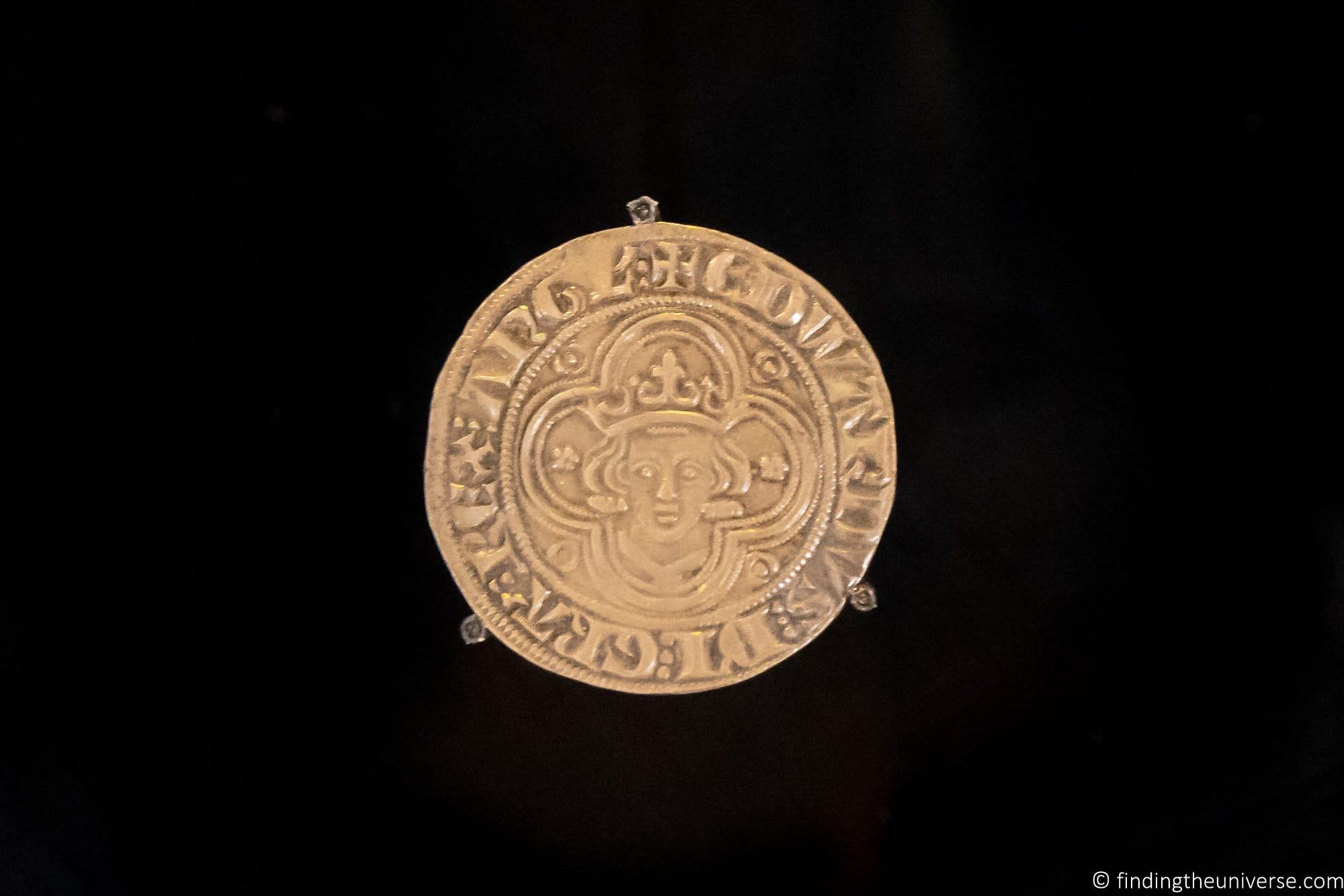
The Battlements
The inner curtain wall of the Tower of London separates the outer ward from the inner ward. This was built during the reign of Henry the III in the 13th century, and much of what you see today is original from this period.
It consists of 13 towers (Bell, Beauchamp, Devereux, Flint, Bowyer, Brick, Martin, Constable, Broad Arrow, Salt, Lanthorn, Wakefield, and the Bloody Tower) which are linked by walls, and the whole construction is generally referred to today as the Battlements.
When built, this primarily served a defensive function. Today, you can walk along the majority of the battlements by taking the wall walk. This takes you through a number of the towers, with many of them setup to show mini exhibitions. In these, you’ll learn all sorts of things about the Tower’s history, from the time the walls were breached during the Peasants’ Revolt of 1381, the Tower’s time as a zoo (the Royal Menagerie), and what happened at the Tower during the World Wars.
One of the more intriguing exhibits for us was about the great fire here that took place in 1841 when Duke of Wellington was the Tower Constable. Another was a room devoted to the history of the animals that were kept at the Tower of London here which included lions, baboons, bears, alligators, zebras, and elephants. You’ll also see sculptures representing some of the animals that were kept here throughout the site.
The wall walk also take you through the next entry in our guide, the Medieval Palace.
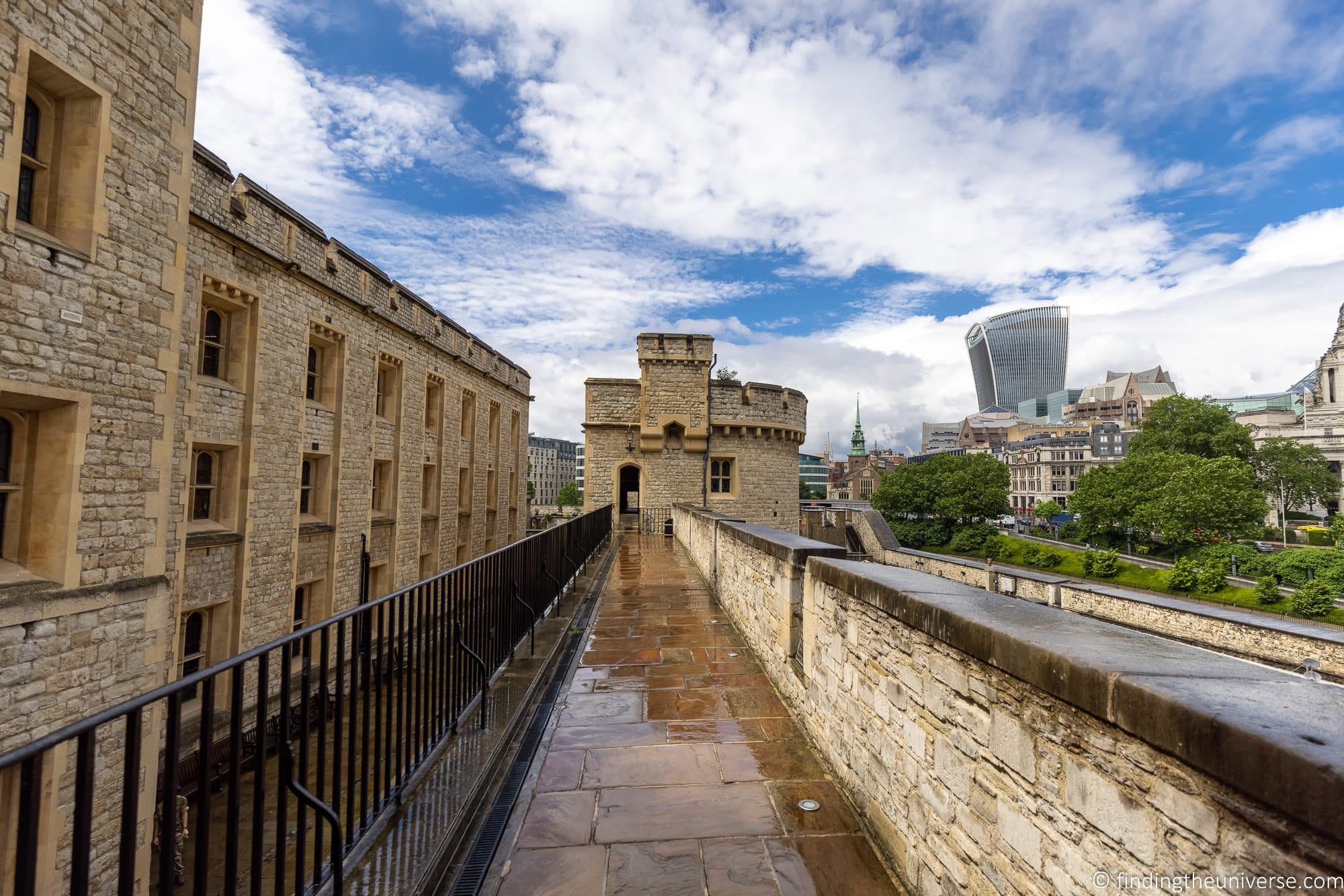

The Medieval Palace
The wall walk along the Battlements starts with you entering St. Thomas’s Tower. This is part of the outer defences of the castle, added by Edward I in the late 13th century. As well as an additional defensive wall wrapping around the outside of the original curtain wall, this features a number of defensive emplacements as well as a large tower.
This tower, St. Thomas’s Tower, was built to serve two purposes. First, it had a river-level water gate entrance, offering direct access to the Thames. This came to be known as Traitors’ Gate, as this was where many Tudor-era prisoners would arrive prior to incarceration, often followed by torture and/or execution.
The upper floor of St. Thomas’s Tower was designed to provide luxurious lodging for the Royal family when they stayed at the Tower. Today, St. Thomas’s Tower along with the next two towers you pass through on the wall walk, The Wakefield Tower and the Lanthorn Tower, are collectively known as the Medieval Palace.
These towers are today set up to demonstrate what the interior would have been like for the visiting Royalty, with objects and furniture dating from the period.


The Crown Jewels in the Waterloo Barracks
A highlight for many visitors to the Tower of London is a visit to see the Crown Jewels of the United Kingdom. This is a collection of royal ceremonial objects, which include the crown worn by the British monarch. It’s the most complete collection of Royal regalia in the world, and the only set still in active use today.
The Tower of London has traditionally been home to the Crown Jewels since the early 13th century. The Jewels on display and in use today primarily date from 1660 when Charles II ascended the throne and restablished the monarchy following the English Civil War.
A highlight of the collection is the Cullinan I diamond, which is the largest clear cut diamond in the world at 530 carats. There are however over 23,000 precious stones in the display, which consists of 142 objects, including plates, swords, sceptres, robes, rings and even a spoon.
My favourite object is the nautical themed silver-gilt Grand Punch Bowl, which can hold 144 bottles of wine, and which is still in regular use!
A visit to the Crown Jewels is a must when visiting the Tower of London. It’s one of the most popular attractions, and one of the only places where photography isn’t allowed. At busier times, there can be quite a queue to visit, so do plan accordingly.

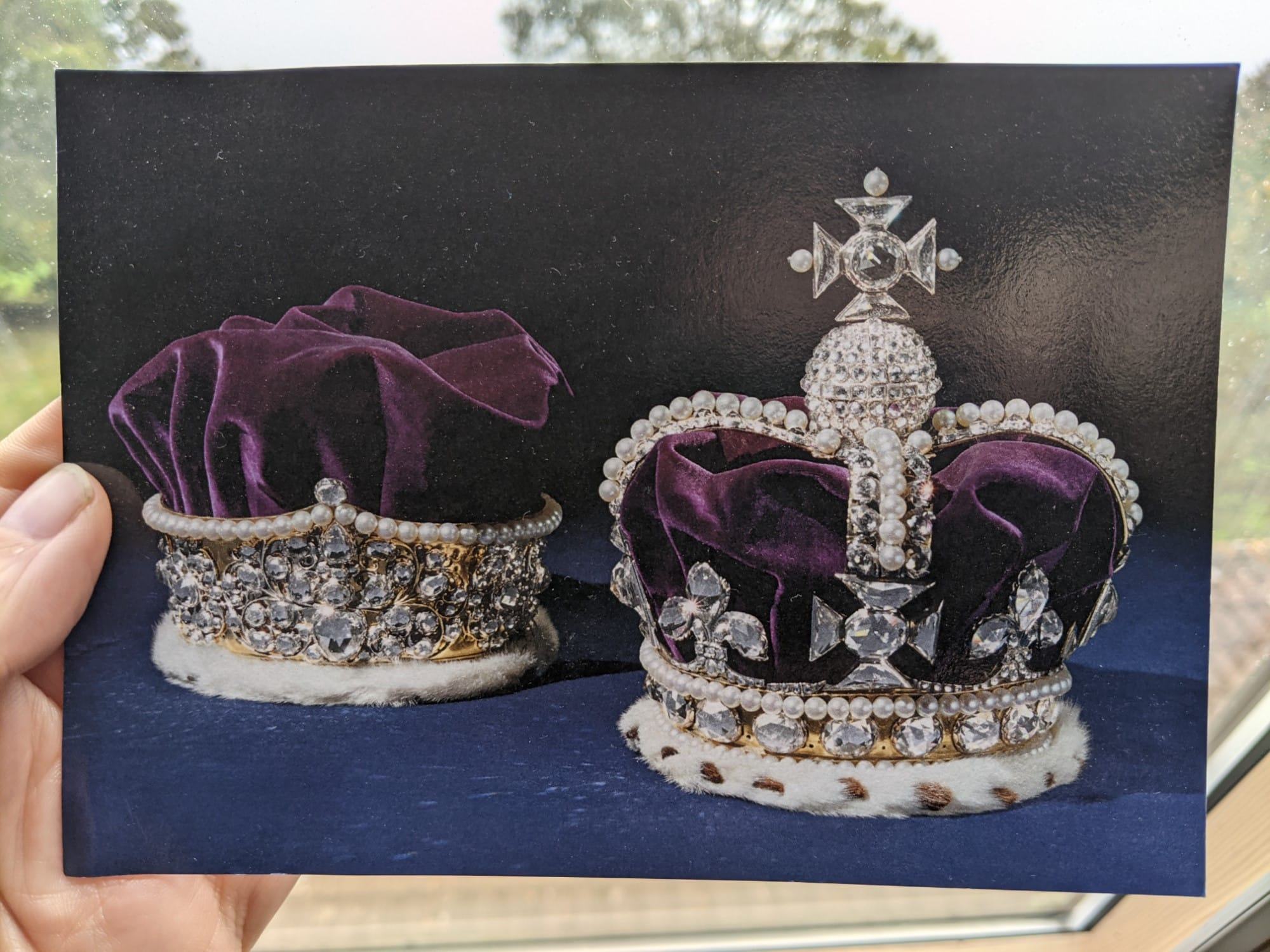
The White Tower
Right at the heart of the Tower of London is the White Tower, the oldest part of the Tower of London and one of the oldest buildings in London.
The building is a keep, which in medieval times was a central fortified tower that normally had the most protection of any building in a castle. It was built in stone in the late 11th century, and fulfilled the role of fortress, royal accommodation, prison and symbol of power. Over the years it’s use evolved, including during the 17th century when the whole tower was used, rather riskily, to store a vast quantity of gunpowder.
Since the 19th century, the White Tower has primarily been a visitor attraction, and a visit to this incredible 11th century medieval palace is a must when inside the Tower of London. Here you will see a number of exhibits including the Line of Kings, which has been on display at the Tower of London since around 1692! Today this historic exhibition is found on the entrance floor of the White Tower.
You’ll also find other interesting armor and weaponry on display, as well as a beautiful 11th century Romanesque chapel, the Chapel of St. John the Evangelist. Note that whilst photography is allowed almost everywhere in the White Tower, it is not permitted in the chapel.
There are also exhibits about the lesser known uses of the Tower of London here including as a jewel, house, records office, Board of Ordnance headquarters, royal mint, menagerie, and royal observatory.
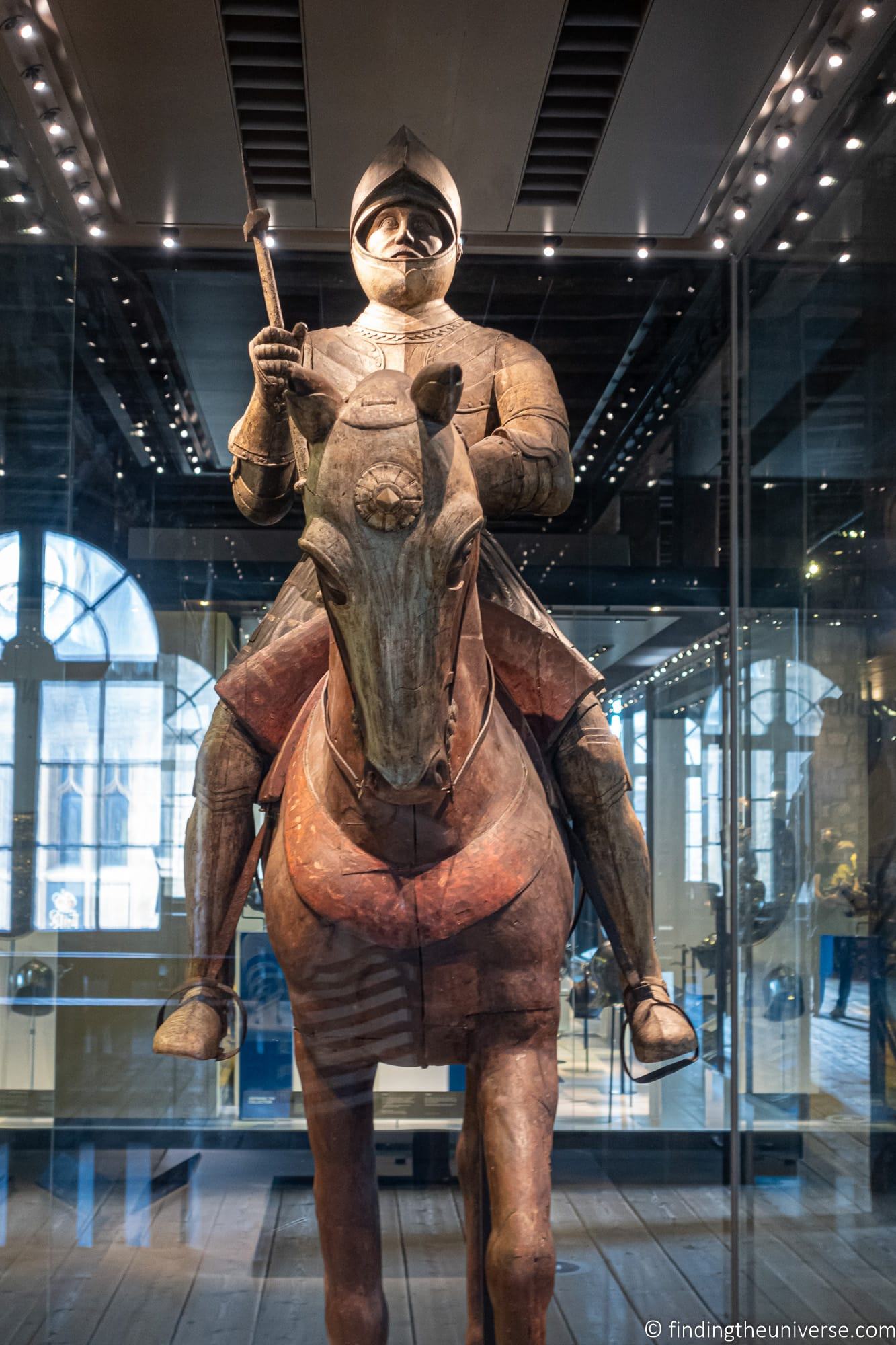
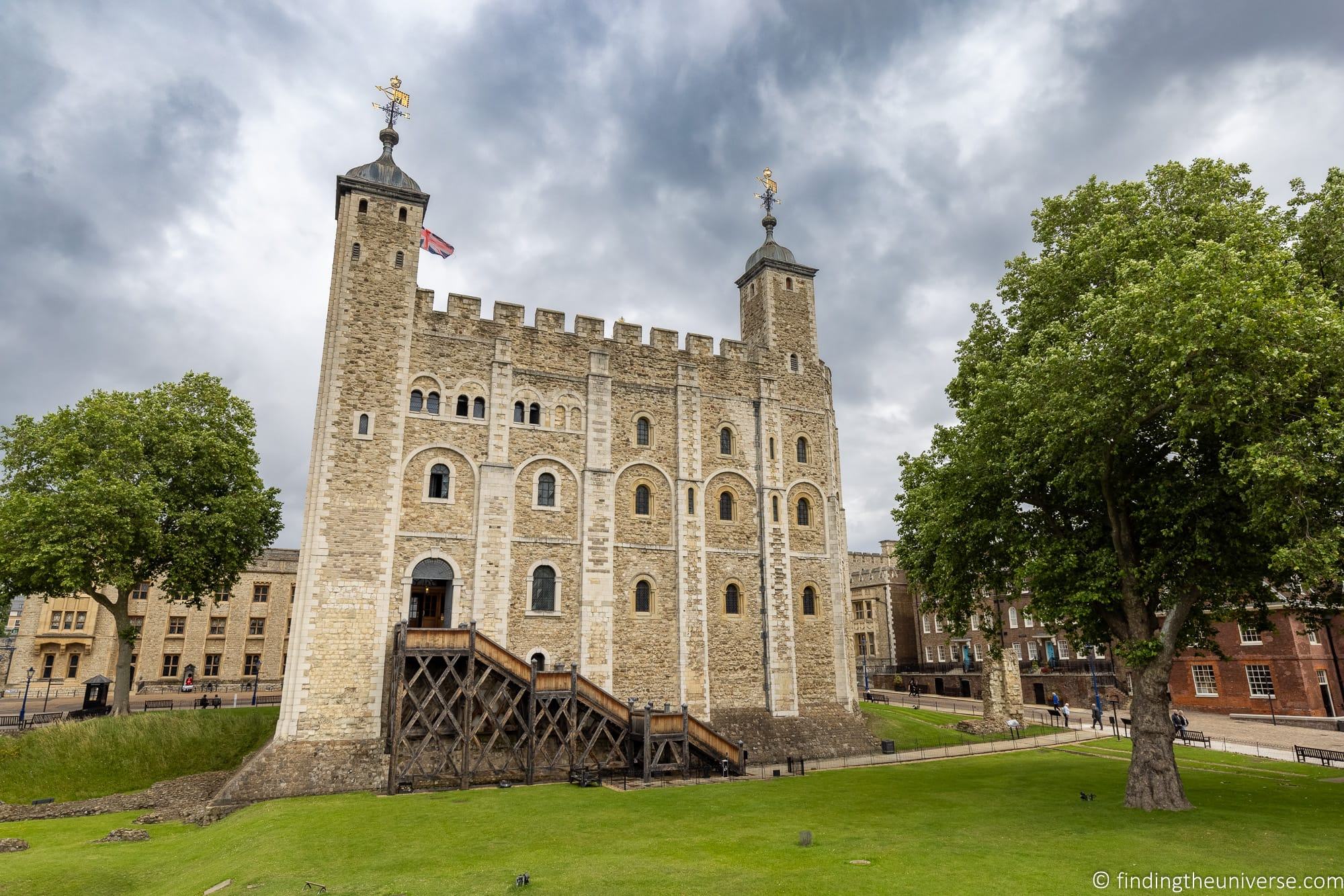
The Bloody Tower
Originally known as the Garden Tower, the Bloody Tower is one of the towers making up the battlements. It gained its rather gruesome name in the 16th century. Two young princes, one of whom was the deposed King and the other was his brother and therefore next in line, were effectively imprisoned in the tower by their uncle the Duke of Gloucester, the future Richard III.
Following their imprisonment and subsequent mysterious disappearance, rumours abounded of their being murdered, and so the Bloody Tower got its name. In 1674, the bones of two children of similar ages were found beneath the staircase in the White Tower at the Tower of London.
Today, you can learn about the Princes and what may have happened to them with a visit to the Bloody Tower. You’ll also learn about other high profile prisoners who stayed here, including Sir Walter Raleigh, who was imprisoned here for 13 years.

Lower Wakefield Tower
Next to the Bloody Tower is the Wakefield Tower, another of the towers along the inner curtain wall. In the lower part of this tower is the Torture at the Tower exhibit.
Over the centuries, and particularly in the 16th and 17th century, there was much political and religious change in the country. These changes resulted in many prisoners being held at the Tower. Often, it was suspected that they held information on co-conspirators, or where perhaps not forthcoming enough with a confession.
Interrogators at the Tower used a range of rather awful devices to extract information from their prisoners, and you can learn all about these at the Torture at the Tower exhibit.
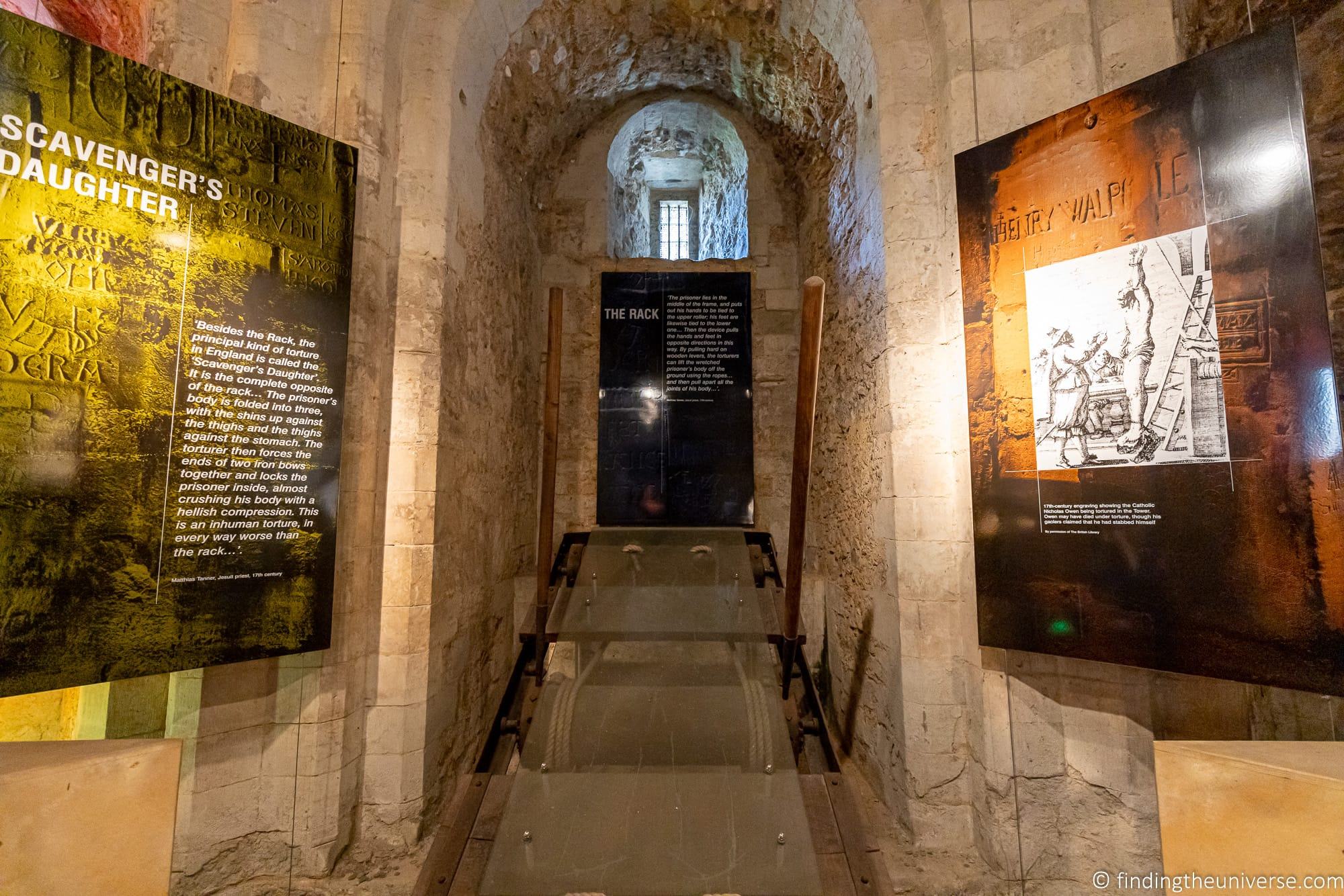
The Fusilier Museum
Formed in June 1685, The Royal Regiment of Fusiliers were originally formed to guard the guns at the Tower of London. Since then, the regiment has seen service in conflicts around the Globe, from the American War of Independence through to the Napoleonic Wars and the Great Wars of the 20th century.
They still have their regimental headquarters inside the walls of the Tower of London, where on the ground floor you can visit the Fusilier Museum. This museum tells the story of the regiment from its formation right up to the present day via a series of objects and information panels, and is well worth the visit.

Tower Green & Scaffold Site
To the west of the White Tower, near the Chapel Royal of St. Peter ad Vincula you’ll find an expanse of grass as well as a memorial.
This area, known as Tower Green, was the site of some of the most high profile executions in British history. Only those of high rank had the privilege of being executed here. Ten people were beheaded on the green, including two of Henry VIII’s wives, Queens Anne Boleyn and Catherine Howard.
Today there is a memorial sculpture to those who lives were taken on the green.

Chapel Royal of St. Peter ad Vincula
Just to the north of Tower Green is the Chapel Royal of St. Peter ad Vincula. “Ad Vincula” is Latin for “in chains”, so this is the Chapel of St. Peter in chains. The chapel is the parish church of the Tower of London, and whilst there has been a chapel on site for many centuries, the current building dates from 1520 and the reign of Henry VIII.
The chapel is perhaps most well known as the final resting place for many of the high profile prisoners who were executed at the Tower. These include Queen Anne Boleyn, Queen Catherine Howard, Lady Jane Grey, and Sir Thomas More. There were many other people interred here, including a number of martyrs who went on to become Saints.
The Chapel Royal is open for visitors and also has prayer services. It’s one of the few places in the Tower of London where photography isn’t allowed.

Beauchamp Tower
Another of the towers in the battlements, although not part of the wall walk, is the Beauchamp Tower. This 13th century tower was used as a prison for most of its history. It takes its name from Thomas Beauchamp, who was imprisoned here at the end of the 14th century.
Being imprisoned at the Tower was, for most prisoners, a very challenging experience. Many had already been condemned to death, and were passing time in fairly grim conditions. Not every prisoner had their own apartments, like Sir Walter Raleigh!
To pass the time and alleviate boredom, many prisoners took to carving graffiti into the walls of the castle. This is still visible today, and coming to see this graffiti has in fact long been a popular pastime amongst visitors to the Tower.
The Beauchamp Tower has a number of intricate carvings in the walls, along with more standard names and dates. These can all be visited and seen as part of the Imprisonment at the Tower Exhibition, found within the Beauchamp Tower.


The Ravens
One of the most well known sights at the Tower of London are the Tower Ravens. These large black birds have been a common sight at the Tower of London for centuries. The history of the Ravens at the Tower is one of myth and legends, so it’s hard to know exactly what is fact and what is not.
One story goes that the ravens were first encouraged to take up residence at the Tower to enhance the atmosphere at the executions on Tower Hill. Large black birds flapping ominously overhead would certainly lend a certain something to any execution. This association with ravens at the Tower is then said to have led to a captive population being permanently installed by Charles II in the 17th century.
Other scholars disagree, and surmise that this is all a myth put about by romantic Victorians. Certainly, the first known reference of captive Tower Ravens is in an illustration of 1863.
Whichever version of events you choose to believe, the reality is that these days there are always at least six captive ravens who are resident at the Tower, and who are looked after by the Yeoman Warders. The legend goes that should the ravens leave the Tower of London, the Crown will fall, and Britain with it.
Rather than testing this theory, the ravens are kept and fed at the Tower, and you’ll no doubt encounter them on your visit. They are often to be found hopping around after the Yeoman Warders, because they are clever birds who know where their food comes from.
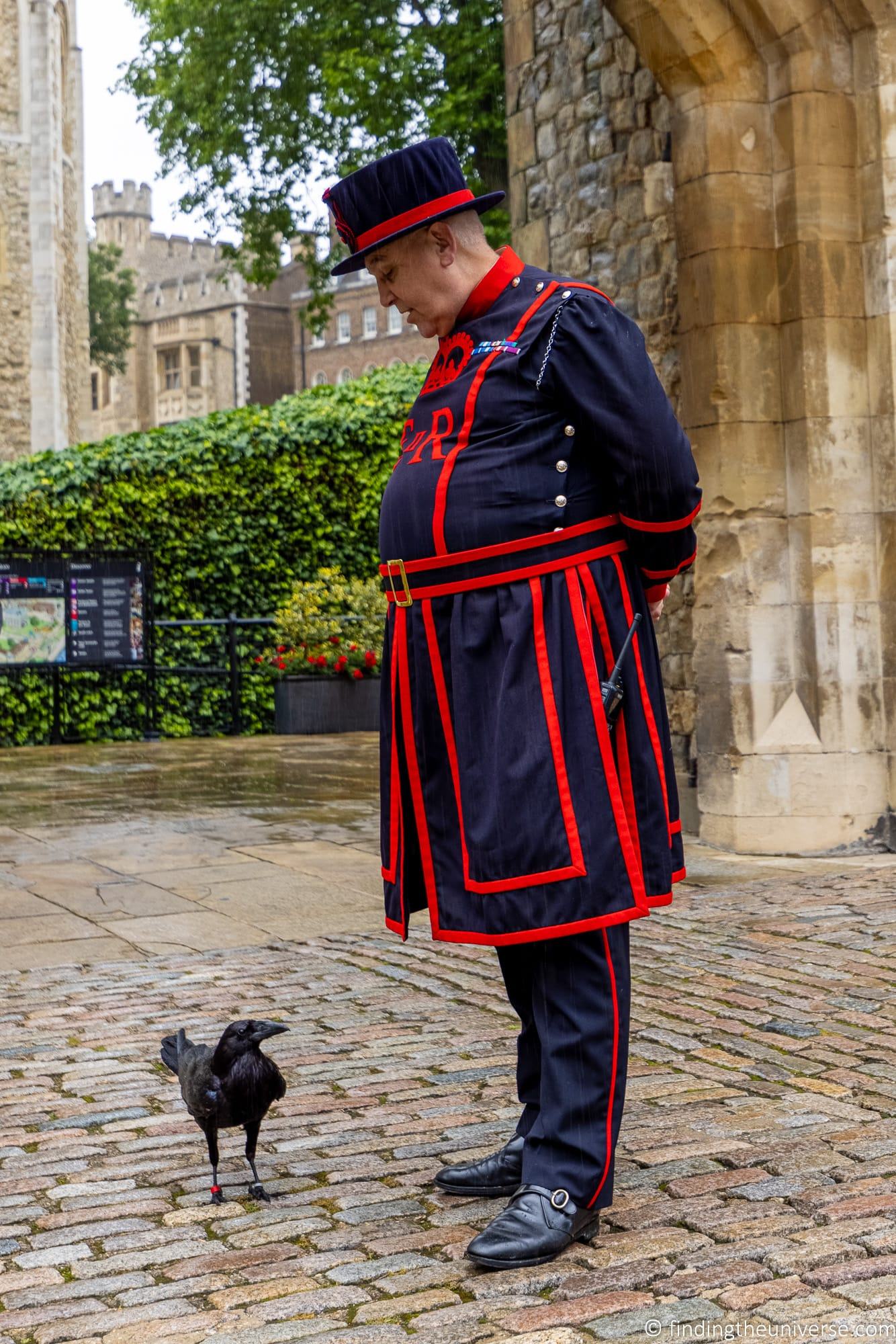
The Yeoman Warders & Guided Tours
An iconic sight at the Tower of London are the Yeoman Warders, commonly known as Beefeaters. These men and women (to date there has only been one woman warder) have the full title Yeomen Warders of Her Majesty’s Royal Palace and Fortress the Tower of London, and Members of the Sovereign’s Body Guard of the Yeoman Guard Extraordinary.
The Yeoman Warders are the ceremonial guards of the Tower of London, with the responsibility of looking after the prisoners in the Tower as well as safeguarding the Crown Jewels. They are also the de facto guides at the Tower, and have been helping tourists find their way around the sight and sharing their knowledge since the 19th century.
Yeoman Warders are commonly known as Beefeaters, a term whose origin is shrouded in mystery, but likely has something to do with the quantities of beef that formed a part of their diet. They were formed in 1485, and are the oldest military corp still in existence.
Yeoman Warders are today all former members of the armed services with a minimum of 22 years service. They live within the grounds of the Tower of London with their families, and they lead free guided tours within the Tower. We highly recommend spending a bit of time chatting to a Warder, as they have some wonderful stories and knowledge to share.
They run free guided tours throughout the day which are included with your tickets, and these are well worth joining. The talks cover different topics, and you can find out more when you visit about what’s on that day.
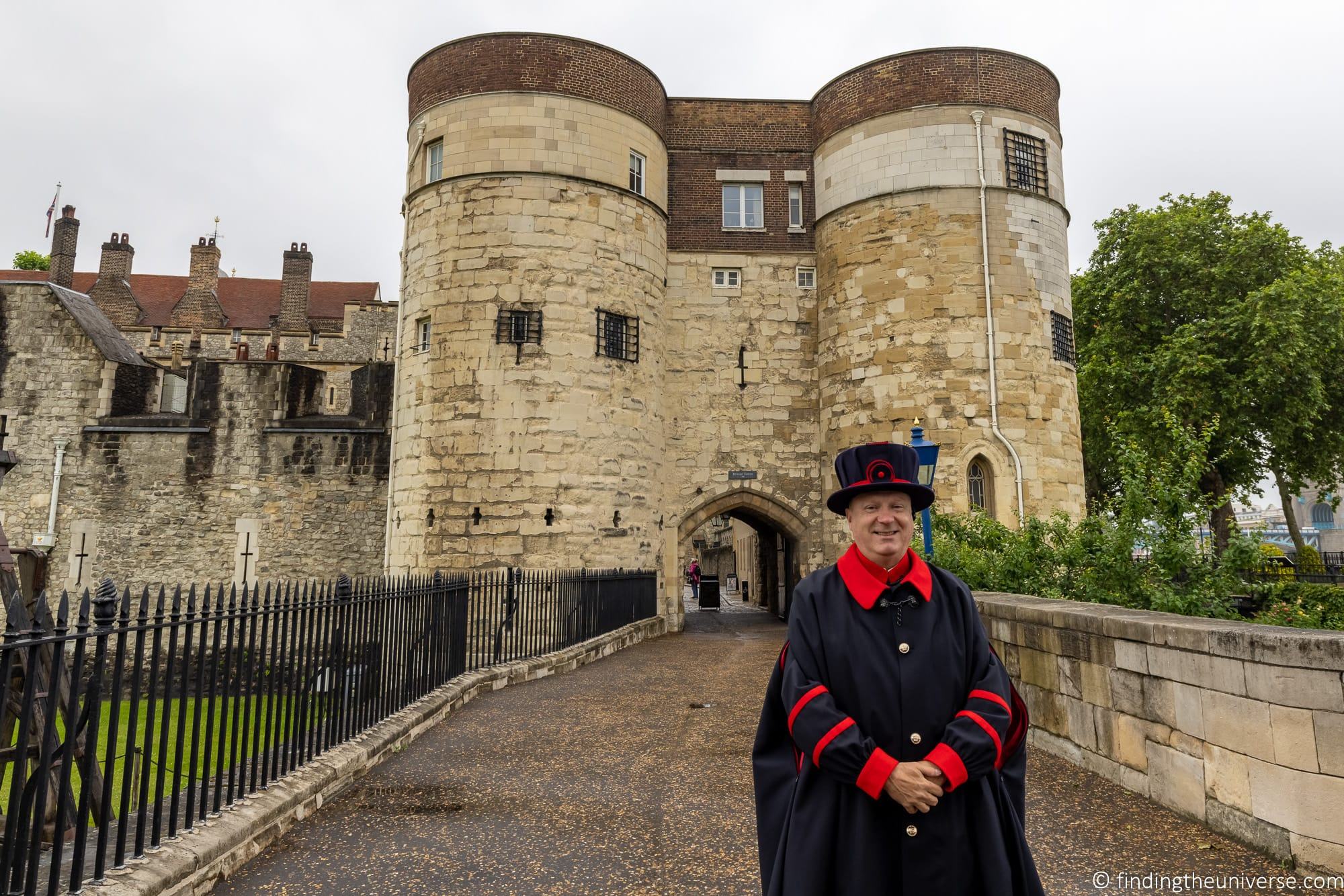
The Guards
As well as the Yeoman Warders, the Tower of London also has a number of Guards on duty. These are active serving military personnel, responsible for guarding the Jewel House and the Queen’s House.
They are recognisable from their red uniforms and their large furry bearskin caps. As well as their guard role, they also take part in three daily ceremonies at the Tower of London: the Ceremonial Opening, the Ceremony of the Word, and the Ceremony of the Keys.
Whilst photography of the Guards is permitted, you should be aware that these are active military personnel performing an important task. When they are marching or otherwise moving around the site, it is important to stand clear and let them get on with their duties.
Unlike the Yeoman Warders, the Guards are not there to provide visitors with assistance and as such they won’t answer questions. So please be respectful and direct any questions you have to the Yeoman Warders, rather than the Guards.

How Long to Visit the Tower of London For?
As you can see, there is a lot to see and do at the Tower of London. We recommend a minimum of two hours for your visit if you just want to see the highlights, but ideally we’d recommend planning to spend around three hours here. At busier times, attractions like the Crown Jewels can involve a queue time of up to an hour, so you will need to consider this as well.
But you can easily spend most of a day here as there is so much to do and see if you visit all the available attractions. In addition to visiting all the various parts of the Tower and attractions, there are also guided tours you can join (most are free with your ticket) as well as the restaurant, café, and gift shops.
Those visiting with children may want to make sure to take some time between visiting buildings and museums to eat and let the kids enjoy the green spaces.
Is the Tower of London Worth It?
Hopefully having read this guide so far, and seeing all that there is to see and do at the Tower of London, you will agree that the Tower of London is definitely worth it.
Whilst the entry price is relatively high, it is on par with other major attractions in London like the London Eye. You could also spend a full day just at the Tower of London if you wanted to as there is plenty to see and do.
We feel it offers great value for what you can see, which includes many things you just can’t see anywhere else like the Crown Jewels.
Practicalities for Visiting the Tower of London
Like any major tourist attraction, there are a few things to be aware of when visiting the Tower of London.
Facilities at the Tower of London
There are a number of toilets at the Tower of London, some of which offer accessible facilities and some of which offer baby changing facilities.
Buggies and push chairs are allowed at the Tower of London, but due to the ancient cobbled ground many parts of the Tower are not exactly pushchair friendly. There is a buggy park outside the White Tower.
There are first aid services at the Tower of London. If you are visiting with children, there is not a meeting point, but children should be instructed to talk with a Yeoman Warder if they need help.
Security at the Tower of London
Like most locations these days, there are security checks when visiting the Tower of London. If you have any kind of small backpack or bag, it will be searched on entry, and the Tower reserves the right to search visitors on entry as well. Large luggage is not permitted in the Tower.
There are a number of prohibited articles which seem fairly obvious to me. Weapons, including knives with a blade in excess of 3 inches are forbidden, as are fireworks, smoke bombs and pepper spray.
Accessibility at the Tower of London
The Tower of London strives to be an accessible venue, with a number of measures in place to make all visitors welcome. However, there are some limitations, as this is a very old building complex with cobbled areas, steep narrow staircases, and low doorways.
There is a full guide to accessibility at the Tower of London, with detailed information on each area of the Tower and accessibility features. You can download this here.
All visitors with disabilities are welcome to bring a carer free of charge. Tickets for carers can be obtained on the day, with presentation of proof of a registered disability.
Luggage storage Near the Tower of London
Whilst small daypacks are allowed, larger luggage and suitcases are not permitted at the Tower of London. There is also no on-site luggage storage. We suggest checking online luggage storage options here and here.
Photography at the Tower of London
As you can see from this guide, I’ve taken a lot of photos at the Tower of London. So I’m pleased to report that photography is allowed almost everywhere within the Tower. The main exceptions to this rule are:
- the Crown Jewels exhibit and the entire inside of the Jewel House
- the Martin Tower
- the Chapel Royal of St Peter ad Vincula.
- the Chapel of St. John in the White Tower
No photography or filming is allowed in these parts of the Tower.
You are also permitted to photograph the Guard and the Yeoman Warders. For the latter, it is always polite to ask permission. For the former, they don’t speak to people usually, but they do expect to have their photos taken. Just be respectful!
If you plan to do any commercial photography or wedding photography, or use photographic equipment such as tripods and selfie sticks, this needs to be arranged in advance. There are also rules in place to safeguard children, young people and vulnerable adults.
Food and Drink at the Tower of London
If you get hungry whilst you are at the Tower of London, you have a few options.
First, you are allowed to bring your own food and drink to the Tower of London. However, do be aware that you are only allowed to consume it in designated areas.
There are also a number of options for eating and drinking at the Tower of London. The largest sit down option is the New Armouries Café. This includes a range of full size hot and cold meals, as well as drinks, snacks, sandwiches, cakes and pastries. This is the best option for a sit down meal.
There are also a number of food and drink kiosks, including an ice cream stand, at various locations around the Tower of London. So you won’t go hungry.
Internet Access at the Tower of London
There is full free WiFi access at the Tower of London. Just connect to the free WiFi network.


Tours of the Tower of London
You can book a tour which includes the Tower of London. Some of these focus on the Tower itself, whilst others will include other sights and experiences across the city.
One thing to note is that the only external guides who are allowed to guide inside the Tower of London are Accredited Guides or Blue Badge guides.
Some tours you’ll find online will say that they include the Tower of London. However, if the tour is not operated by an accredited blue badge guide, the guide will not actually accompany you inside the Tower of London. So you would have to guide yourself for this part of the tour, or join one of the free tours after you enter with a Yeoman Warder.
Here are some options to consider.
- This Tour of the Tower of London includes early access to the Tower and Crown Jewels. You’ll also get to see the opening ceremony, and have a fully guided experience inside the Tower of London
- This full day tour of London includes many of the highlights of London, and finishes with a fully guided tour of the Tower of London
- If you’d like a private tour, this tour with a blue badge guide focuses on the Tower of London, and the guide will accompany you inside throughout the experience
- This early access tour of the Tower of London with a Beefeater which has you visiting prior to general admission
- If you want to see the evening Ceremony of the Keys and also take a quick tour of the Tower, check out this tour. It includes an hour’s tour with a Yeoman Warder as well as the opportunity to watch the Ceremony of the Keys. I have done this tour and the experience is definitely interesting, however it is quite a quick tour and you don’t see inside the White Tower or the Crown Jewels. So for a more complete experience I would probably recommend this morning tour.

Tips for Visiting the Tower of London
To help you get the most out of your Tower of London visit, we’ve put together these tips based on our multiple visits.
Consider a Guided Tour or Audio guide
As you have probably noticed, there’s a lot to see at the Tower of London, and the building itself has been witness to around a thousand years of history. As such, it can be a bit overwhelming!
For this reason, we usually recommend that visitors consider either taking a guided tour or using the on-site audio guide to enhance their visit. For guided tours, the Yeoman warder led tours which are included in your entry ticket are a great option. Alternatively, see our section on recommended tours for other ideas.
Chat with the Yeoman Warders
Whether or not you opt to take one of the free guided tours, we definitely recommend taking some time to talk with the Yeoman Warders. They’re easily recognisable from their uniforms, and they have a wealth of knowledge about the Tower of London.
So whether you have a question about what it’s like to actually live at the Tower of London, or want to know something about its history, these are the people to talk to!
What to Bring
You’ll be spending a few hours at the Tower of London, so we would recommend bringing comfortable clothes and walking shoes, as well as a refillable water bottle. We also recommend either an umbrella or lightweight rainproof coat, whatever time of year you visit. There are quite a few outdoor areas, and the weather in London can be unpredictable even in the summer time!
For more ideas on packing, see our guide to what to pack for London.
Plan your day in advance
There is a lot to see at the Tower of London, so having a general idea of the layout and what order you intend to visit things is a good idea. If you are not sure if you have the time to visit everything (there is a lot to see), you will want to prioritize the areas you really want to see by visiting them first.
Planning ahead can save you retracing your steps and walking further than you need to. As mentioned previously, the site spans 12 acres with two concentric walls surrounding the centre, and attractions found throughout.
The site is well signposted, and you’ll get a free map when you visit. You can also download this in digital form in advance of your visit from the official website here. If you need directions when you’re on site, just ask a Yeoman Warder.
We highly recommend planning to arrive as close to opening as you can, and to head straight for the Crown Jewels exhibition. This tends to be the busiest attraction on the site, and queues can be up to an hour long during peak visiting times. So if you can get this done first then you’ll be able to have a more relaxing time overall.
Attractions Near the Tower of London
The Tower of London is very close to a number of other London attractions. These include:
- Tower Bridge (6 minute walk)
- HMS Belfast (10 minute walk)
- The Shard (20 minute walk)
- Borough Market (20 minute walk)
- St. Paul’s Cathedral (20 minute walk)
- Shakespeare’s Globe (20 minute walk)
As you can see, it would be easy to incorporate a trip to the Tower of London with other sightseeing. See our suggested itineraries for 1 day in London, 2 days in London, 3 days in London and 6 days in London for some ideas.
The Tower of London is also very close to Borough Market, which is a popular spot for food tours. You could definitely combine a visit here with a food tour on the same day. See our guide to the best food tours in London for some options to choose from.

Where to Stay Near the Tower of London
If you want to stay near the Tower of London, we’ve put together some options for you. It’s worth bearing in mind that The Tower of London is right next to the city of London, so this area is largely dominated by office buildings rather than hotels, however there are some options to choose from. We suggest the following.
- Wombats Hostel – just 13 minutes walk from the Tower of London and Tower Bridge, this well reviewed hostel offers basic shared accommodation. There’s also a bar and shared kitchen facilities on site.
- Clayton Hotel – well located for the city’s financial district and just 15 minutes walk from the Tower of London, this is a very well rated 4* hotel offering comfortably sized en-suite stylish rooms. There’s free WiFi throughout and an on-site restaurant and bar.
- New Road Hotel – this excellent value and well reviewed boutique 4* hotel in Whitechapel is found in a former textile factory. It’s 25 minutes walk to the Tower of London. A wide range of rooms are available, from more budget oriented options through to higher end options with hot tubs and terraces. Rooms are all en-suite and air-conditioned, and there’s also an on-site bar and restaurant.
- Shangri-La Hotel at the Shard – found between floors 34 and 52 of the Shard, rooms at the well reviewed 5* Shangri-La offer some of the most spectacular views of the city you’ll find in any hotel in London. Good sized rooms feature marble en-suite bathrooms with shower and separate bath tub. Rooms also feature air-conditioning, coffee machines and free WiFi, as well as a set of binoculars to enjoy the view! There are three dining and drinking menus on site, and it’s a 20 minute walk to the Tower of London
Of course, there are many more options for accommodation all across London. See our guide to where to stay in London for some more options and tips on which London neighborhoods might be the best place to stay depending on what you plan to visit.
Further Reading for Visiting London
That’s it for our complete guide to visiting the Tower of London! We hope you found it useful to help you decide on the best property for your trip to the city. We’ve also got a number of other resources to help you plan your trip to London and the UK in general which we think you’ll find useful.
- We have detailed itineraries for 1 day in London, 2 days in London, 3 days in London and 6 days in London
- Another popular attraction in London is the London Eye. See our complete guide to visiting the London Eye for everything you need to know for the London Eye
- You’ll need somewhere to stay in the city if you’re here for more than a day. See our guide to where to stay in London for some suggestions across all budgets.
- If you plan on doing much sightseeing in the city, you will likely save money with a London Pass. See our complete London Pass review here to see if this might save you money on sightseeing.
- We have a guide to getting around London, and a guide to using the Oyster card in London.
- If you’re flying into one of London’s six airports, see our guide to getting to London from the airport.
- We have a detailed guide to what to pack for London, to help you prepare for your trip to London.
- We put together some tips on finding the best Photography Locations in London
- For the Harry Potter fans amongst you, take a look at our guide to finding Harry Potter in London
- 8 Things to Do in Kensington, London, in case you wanted to focus more on a specific region of the city
- If you enjoy military museums, take a look at our guide to London’s best military museums and memorial. Also see our Winston Churchill in London guide.
- Tips on spending Two Weeks in the UK, should you want to have London as the start of a bigger adventure
- For budget planning, see our guide to how much it costs to travel in the UK
- Our experience taking a full day walking tour of London, in case you like the idea of a fully guided day
- We have a complete guide to the best food tours in London, which also details all the food and drink you might consider trying when in the capital
- Thoughts on visiting Stonehenge from London as a day trip
- Other good day trips from London include Oxford and Cambridge. See our guide to Oxford in a day as well as things to do in Cambridge for ideas.
- Heading further north? We have loads of content on Scotland, including a 2 Day Edinburgh itinerary, a guide to the North Coast 500 and a 2 Day Glasgow itinerary
- How about heading to Paris from London? We have a detailed guide to the best way to get from London to Paris to help you plan
- The Eyewitness Travel Guide to London, which has all sorts of information within, including more itineraries and ideas for your trip
- Rick Steve’s London guide, the #1 bestseller on Amazon for UK travel guides, and always an excellent source of relevant information
And that’s it! We hope you found our guide to visiting the Tower of London helpful, and as always, if you have any questions, just pop them in the comments and we’ll answer them as soon as we can!

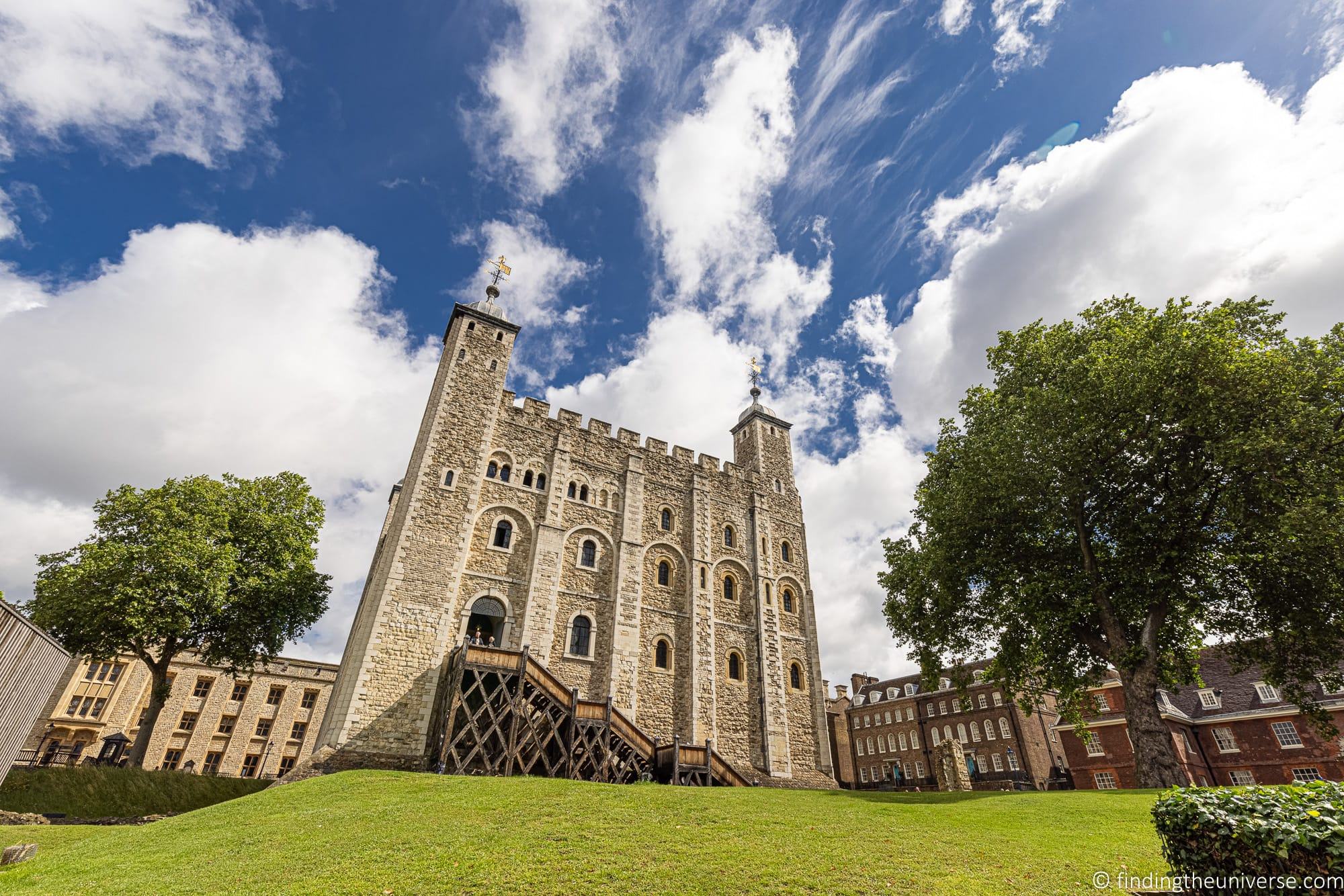
Anne Clough says
Are there water fountains on site to be able to fill my bottles?
Laurence Norah says
Hi Anne,
Yes there are. I can also recommend getting a copy of the “Refill” app for your smartphone which has a map of all the water fountains as well as cafes and bars which offer free refills of water bottles 🙂
Have a great time in London!
Laurence
Nichelle says
We will bein London April 2 and April 3rd, when can we purchase tickets for the Tower of London?
The website does not show any tickets available to purchase yet.
Thank you,
Nichelle
Laurence Norah says
Hi Nichelle,
Sorry about the slow response! I’m travelling with limited internet at the moment. You are correct, currently tickets beyond the 1st of March are not available. I contacted the Tower of London about this, and they were not able to give me an updated timeframe for when these tickets will go on sale, only to say that you should keep checking the website. Sorry to not be of more help! Have a great trip to London!
Laurence
susan says
great site! do you know if beefeaters will be available in May 2022?
Laurence Norah says
Thanks Susan! Yes, the Beefeaters should be leading their tours in May and also be there for any photos or questions you have. They live on site so they are pretty much always there 🙂